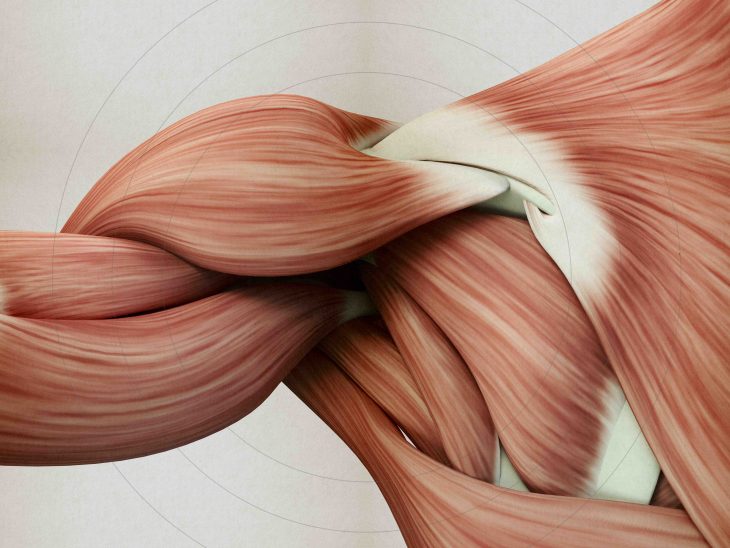
Within the realm of human anatomy, the muscular system stands as a testament to the remarkable adaptability and resilience of the human body. While they depend largely on training and protein to grow, our muscular system stands out as a powerhouse of strength, flexibility, and control and even plays a crucial role in the function of our vital organs. Here are 12 fun facts about the muscular system.
We have three types of muscles.
The human body is equipped with not just one, but three types of muscles: skeletal, smooth, and cardiac. Each type has its unique characteristics and functions. Skeletal muscles, which are under our voluntary control, enable movements like walking and lifting. Smooth muscles, found in organs like the stomach and intestines, work involuntarily to facilitate functions such as digestion. Finally, the cardiac muscle, exclusively found in the heart, tirelessly pumps blood throughout our bodies.
Our muscular system consists of over 600 skeletal muscles.
From the top of our heads down to the bottom of our feet, we are literally covered in muscles.
That is why our muscles make up approximately 40% of our body weight.
This significant proportion is split between hundreds of muscles throughout your body, with the largest concentration found in the lower body due to the weight-bearing nature of our legs and hips.

The strongest muscle is actually not the tongue.
Though we grew up learning that the tongue is the strongest muscle in the body, it is actually not true. And the Scientific American Journal confirms it too. The strongest muscle still remains debatable with three contenders contending to snag the top position – the bottom, the jaw, and the heart. This is because there is no one way to determine the “strongest muscle”.
If we’re looking at sheer strength and brute force then our gluteus maximus muscle, responsible for hip and thigh movement, is the most powerful muscle. But in terms of working in harmony with our bones as a lever and muscle contractions, the masseter (jaw muscles) is the strongest out there. And finally, if we measure “strongest” in terms of the overall work across a lifetime, then the heart, which continuously pumps for 24/7 hours, every day, is the strongest muscle in our body.
The smallest muscle is found in our ears.
In contrast, the stapedius muscle in the human body is the smallest. Found in the middle ear, this tiny muscle, merely a millimeter in size, serves a significant purpose: it controls the vibration of the smallest bone in the body, the stapes, protecting our ears from loud noises.
Our heart pumps about 2,000 gallons of blood daily.
While it might not lift heavy weights, the heart, composed of cardiac muscle, is arguably the hardest-working muscle in the body. It beats approximately 100,000 times per day, pumping around 7,570 liters (2,000 gallons) of blood daily. This relentless performance continues throughout a person’s life, demonstrating the incredible stamina of the cardiac muscle.
Our muscles are essentially heat generators.
Not only are muscles responsible for movement, but they also generate a significant amount of heat. In fact, nearly 85% of our body heat is produced due to muscle contractions. Remember those times when you are shivering in the cold? And you try to relax to stop shivering, but only works for about 2-3 seconds? Those few seconds occur because your brain sent a signal to your muscles to contract and produce heat. The human body is truly an intriguing creation.
Muscles are also the main consumer of our energy.
When active, muscles use up a significant portion of our body’s energy reserves. This is why activities that involve muscle exertion often result in an increased appetite, as the body needs to replenish its spent energy stores. This also explains why people with a higher muscle percentage have higher metabolism rates.
The fastest muscle is our eyelids.
Blink and you might miss it! The fastest muscle in our body is the muscle responsible for closing our eyelids—the orbicularis oculi. It contracts in less than a tenth of a second, protecting our eyes from potential harm.

Our muscles cannot actually push.
Here’s an intriguing fun fact about the muscular system: muscles can’t push; they can only pull. When we ‘push’ something, what’s really happening is that the muscles on one side of a joint are pulling the bone in that direction. For example, when you push open a door, it’s actually your triceps pulling on your forearm bones!
Our muscles are also skilled multitaskers.
Just like our liver, our muscles are experts at multitasking. They can contract and relax simultaneously in a process known as co-contraction. This remarkable ability helps us maintain stability and balance during complex movements like walking on uneven terrain.

They are constantly adapting and are quick learners.
Muscles are incredibly responsive and adapt quickly to the demands placed on them. Regular exercise can increase muscle size and strength, a process known as hypertrophy. Also, our muscles are quick learners, taking only 2-4 weeks to form muscle memory. Conversely, a lack of use can lead to muscle atrophy, or decrease in size and strength.
Was this page helpful?
Our commitment to delivering trustworthy and engaging content is at the heart of what we do. Each fact on our site is contributed by real users like you, bringing a wealth of diverse insights and information. To ensure the highest standards of accuracy and reliability, our dedicated editors meticulously review each submission. This process guarantees that the facts we share are not only fascinating but also credible. Trust in our commitment to quality and authenticity as you explore and learn with us.


